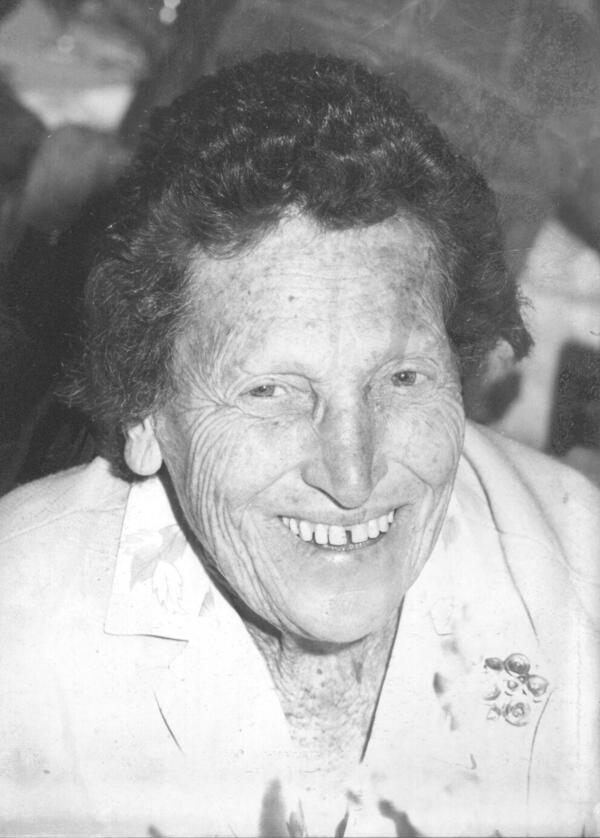“Women in Nuclear History” series #14 – Tikva Alper – South African Physicist Famous for Radiology Research
Tikva Alper (1909-1995) is our 14th installment of women in nuclear history. She was trained as a physicist and worked with Lisa Meitner on delta rays produced by alpha particles, but her most important work was in radiobiology to explain the origin of scrapie – an infectious disease that kills sheep; she was also a social justice activist.
- Tikvah Alperwas was born on January 22nd, 1909 in South Africa as the youngest of four daughters in a family of Jewish refugees from Russia.
- She was a very bright student. She completed her last two years of school education in a single year to win one of the few scholarships open to women, enabling her to enter Cape Town University at the age of sixteen. By age twenty, she had qualified with distinctions in physics with both BA and MA degrees.
- She moved to the Kaiser-Wilhelm Institute in Berlin. There she joined the laboratory headed by Lise Meitner and worked on a PhD thesis paper on delta rays produced by alpha particles (1933). For this paper, she was awarded the British Association Junior Medal. She as well as Lise Meitner could not stay in Germany because of Nazi politics, so she lost her chance to contribute more to the nuclear fission process.
- After returning to South Africa, she held a University teaching post. She also married her childhood friend Max Sterne. After that, she had to leave her University position, since academic posts were then not available to married women. She conquered this obstacle by collaborating with her husband at the laboratory that they built in their garden.
- In 1936, their first son, Jonathan was born. He was deaf so she traveled to St Louis, USA, to train as a teacher of the deaf so that she would be able to properly educate him. This began her connection with the Hammersmith Hospital, London and her work on radiation effects in living cells.
- She and the family came to settle in England where she again started work as an unpaid fellow at the Experimental Radiopathology Unit at Hammersmith Hospital, London. On this occasion, she was given a small grant to continue studies on the irradiation of bacteriophage in Cambridge.
- She was the most known for her breakthrough science in radiation biology to explain infectious agent (prion) which posits as rough protein that does not contain nucleic acid. This “virus” is very difficult to kill, causing scrapie, infectious brain disease that affects and kills sheep.
- She was the director of the radiobiology unit from 1962 until her retirement in 1974. Her classic text “Cellular Radiobiology” was published in 1979. Tikvah Alper continued an active professional life in retirement,
culminating in a brilliant lecture to the Radiation Research Society in Dallas. - She was a social activist, and since she opposed apartheid, she was forced to leave South Africa in 1951. She was also a feminist and was forced to work often for free as a married woman. Tikvah and her husband enjoyed an outdoor life with swimming, surfing and sailing but, at the same time, managed even early on to demonstrate her characteristic determination and her impressive academic abilities.
- She died in Sarisbury, Hampshire, England, in 1995, and was survived by her husband Max, sons Jonathan and Michael, six grandchildren, and three great-grandchildren.

References:
- https://en.wikipedia.org/wiki/Tikvah_Alper
- https://jwa.org/blog/risingvoices/social-justice-and-science-superwoman-tikvah-alper
- https://www.versantphysics.com/2021/08/24/women-in-radiation-history/
- https://graphics8.nytimes.com/packages/pdf/science/Prusiner.pdf
- https://www.tandfonline.com/doi/full/10.1080/09553002.2021.2009148